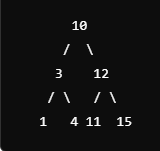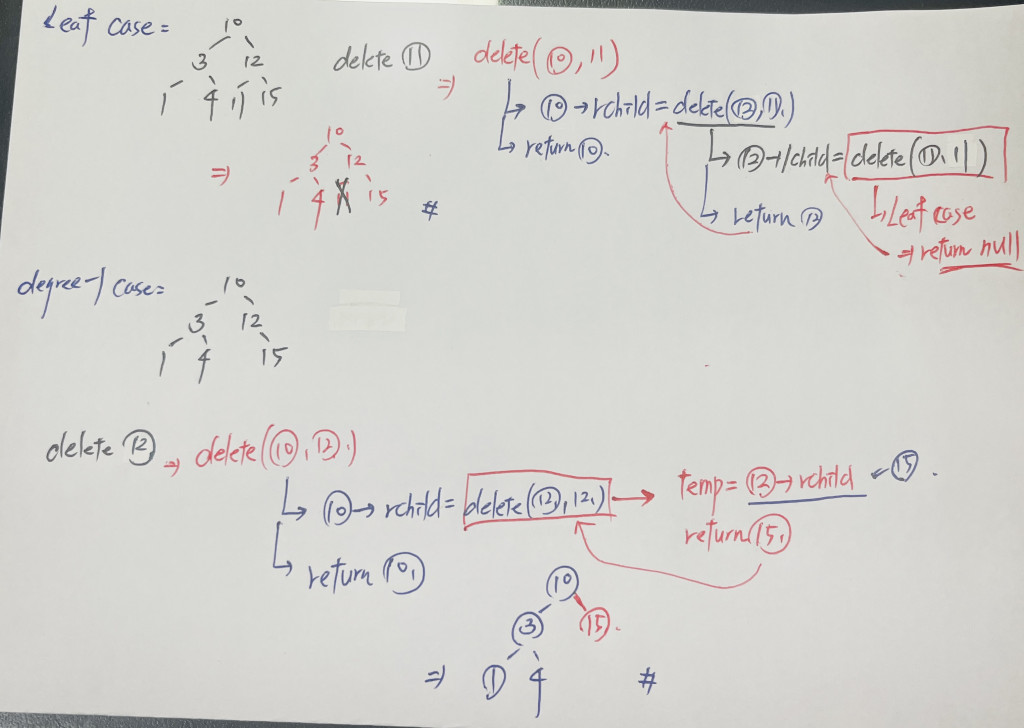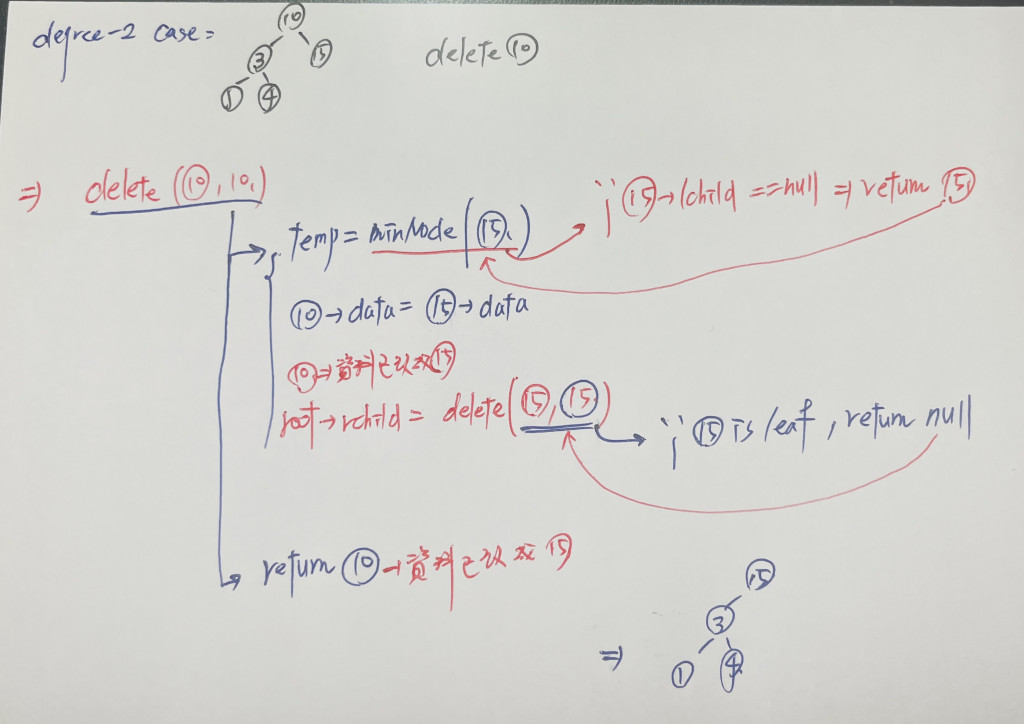二元搜尋樹(Binary Search Tree, BST)是一顆 Binary Tree。可為空樹,若非空則:

這就是一個二元搜尋樹。
先將資料建成 BST 後:
根據 BST 的定義,左子樹的值都比樹根小,右子樹的值都比樹根大。
所以用**中序(inorder traversal)**追蹤即可,因為其為 L D R,剛好為小到大。
以上面的圖為例:
中序追蹤為:1 3 4 10 11 12 15 即為小到大排序。
那就使用 Stack 將 小到大反序就好!
先來定義 Node 的結構:
typedef struct treenode{
int data;
struct treenode* lchild;
struct treenode* rchild;
}treenode_t;
畢竟二元搜尋樹也是一棵二元樹,因此他的演算法跟遞迴脫不了關係的。
(假設資料不會重複)
先跟 root 比較,若比 root 小,則到左子樹新增該節點,若比 root 大,則到右子樹新增該節點。直到 root 為空,才在該位置新增節點。
treenode_t* BinarySearchTree::insert(treenode_t* root, int x){
if(root == null){
treenode_t* newNode = new treenode_t;
newNode->data = x;
newNode->lchild = nullptr;
newNode->rchild = nullptr;
return newNode;
}else{
if(x > root->data){
root->rchild = insert(root->rchild, x);
}else{
root->lchild = insert(root->lchild, x);
}
}
return root;
}

先 search 到該資料後,分成三個 case 處理
treenode_t* BinarySearchTree::delete(treenode_t* root, x){
if(x < root->data){
root->lchild = delete(root->lchild, x);
}else if(x > root->data){
root->rchild = delete(root->rchild, x);
}else{
// node found
if(root->lchild == nullptr && root->rchild == nullptr){
// leaf case
delete root;
return nullptr;
}else if(root->lchild != nullptr && root->rchild != nullptr){
// degree-2 case
treenode_t* temp = minNode(root->rchild);
root->data = temp->data;
root->rchild = delete(root->rchild, temp->data);
/*
treenode_t* temp = maxNode(root->lchild);
root->data = temp->data;
root->lchild = delete(root->lchild, temp->data);
*/
return root;
}else{
//degree-1 case
if(root->rchild != nullptr){
treenode_t* temp = root->rchild;
delete root;
return temp;
}else{
treenode_t* temp = root->lchild;
delete root;
return temp;
}
}
}
}
treenode_t* BinarySearchTree::minNode(treenode_t* root){
if(root->lchild != nullptr){
return minNode(root->lchild);
}else{
return root;
}
}
treenode_t* BinarySearchTree::maxNode(treenode_t* root){
if(root->rchild != nullptr){
return minNode(root->rchild);
}else{
return root;
}
}


Binary Search Tree 的 新增 刪除 查詢的動作,皆跟樹高有關:O(H),但其可能斜曲,導致時間變成 O(n),為了解決這個問題,明天要來介紹,高度平衡的二元搜尋樹:AVL Tree。
